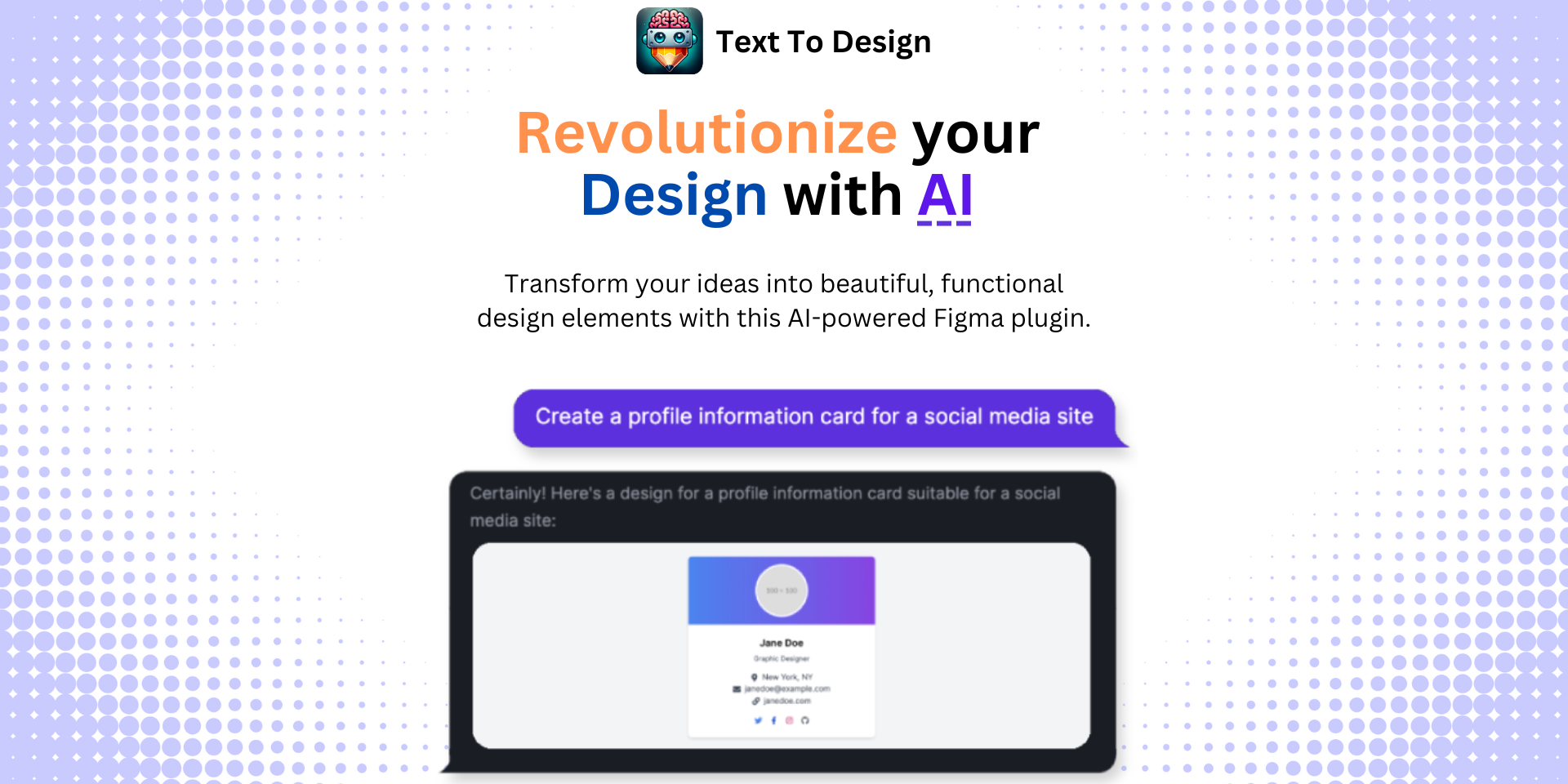Converting Figma Designs to React Code: A Comprehensive Guide
No results found
4/11/2024
Converting Figma Designs to React Code: A Comprehensive Guide1
If you're a designer or developer, you're likely familiar with Figma, a powerful design tool used for interface design and prototyping. But have you ever wondered how to transform those Figma designs into working React applications? This comprehensive guide will take you through the process step by step, using various plugins and tools. Let's dive in!
The Figma to React Conversion Process
The process of converting Figma designs into React code involves several steps and can be facilitated by using third-party plugins. Here are the most common steps:
-
Switch to Developer Mode in Figma: This mode will provide you with a detailed view of your design components, including their properties and hierarchy.
-
Select Portions of the Mock-up for Code Generation: You can choose individual elements or groups of elements that you want to convert into React components.
-
Use a Plugin for Code Generation: Tools like Visual Copilot from Builder.io2 and Anima3 can help automate the code generation process. These plugins can generate code snippets based on your Figma designs that you can then use in your React application.
-
Customize the Code Output: You can customize the code output based on your needs, supporting different frameworks and styling options.
-
Refine the Code: AI tools can help speed up the conversion process, but the code they generate may still need some manual tweaking. Web developers play a crucial role in refining and optimizing the code for production applications.
Understanding the Tools
Visual Copilot from Builder.io
Visual Copilot is a plugin from Builder.io that simplifies the process of converting Figma designs into code2. It offers an intuitive interface that helps you choose which parts of your design to convert into code and customize the output based on your needs. The plugin supports various frameworks and styling options, giving you more control over the final output.
Anima
Anima is another tool that helps you convert Figma components into React components directly within Figma3. It offers a streamlined process, allowing you to instantly convert your designs into usable React code.
The Role of Web Developers in the Conversion Process
While AI tools like Visual Copilot and Anima can automate a significant part of the conversion process, they aren't a substitute for web developers. These tools generate code snippets based on your designs, but this code may not be optimized for production applications. Web developers play a crucial role in refining this code, ensuring it's efficient, maintainable, and fits the application's overall architecture.
Conclusion
Converting Figma designs into React code has never been easier, thanks to tools like Visual Copilot and Anima. While these tools automate a significant portion of the process, web developers still play an essential role in ensuring the code is production-ready. Now that you know how to transform your Figma designs into React applications, why not take your design capabilities to the next level with Text to Design Figma Plugin4?
This innovative AI-powered Figma plugin transforms your text descriptions into stunning design ideas, perfect for designers, developers, and creative teams. It's a superior choice for potential users who want to take their design workflow to the next level. 
Footnotes
Step Into the Future of Design with your AI Copilot
Join +40K designers revolutionizing their workflow with AI. Install our Text-to-Design plugin in just a few clicks to unlock your creative potential. Start for free and instantly generate designs for your project.